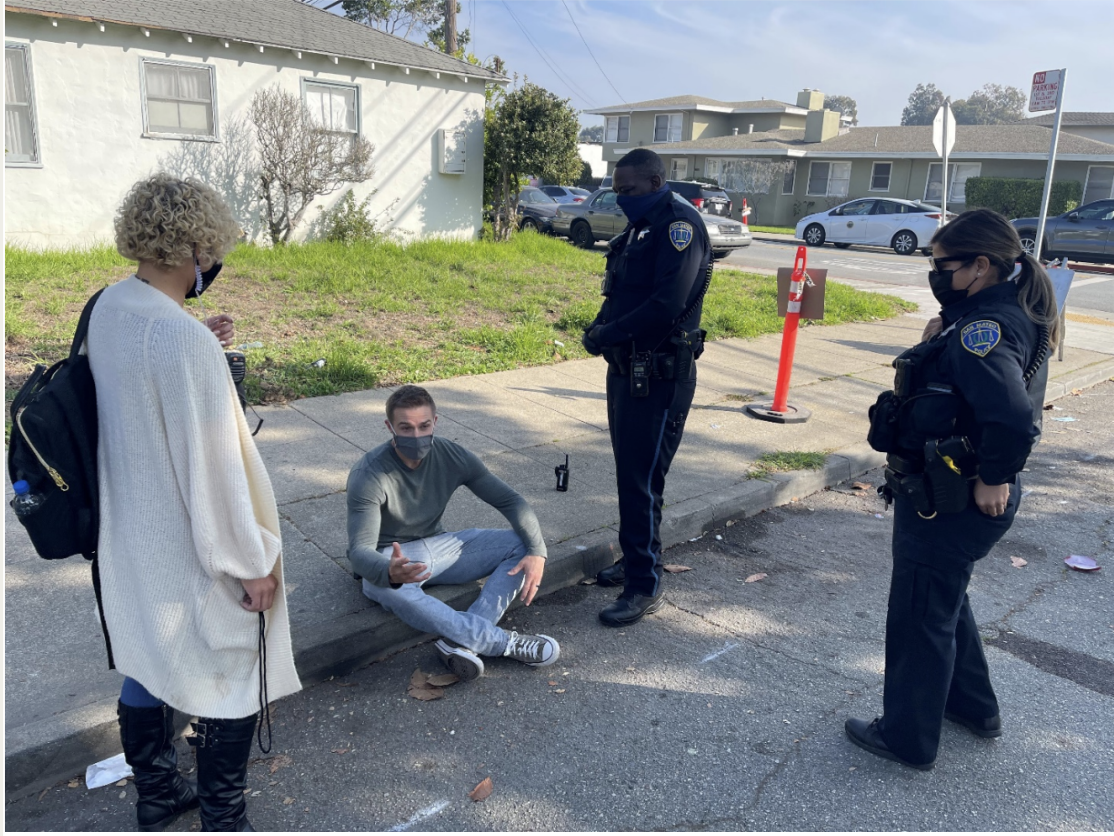
San Mateo County’s co-response program, which pairs a mental health professional with law enforcement to respond to behavioral health crises, will add a new clinician to its team in the coming weeks, and is in talks with county representatives about continuing the program and expanding it to neighboring counties.
The program, the Community Wellness and Crisis Response Team was piloted in 2022 amid calls to increase community resources for mental health in policing after the county experienced a surge in mental health related 911 calls during the pandemic. Police officers, some community members said, are not equipped and trained to handle mental health issues on their own.
CWCRT resulted from a collaboration between the County of San Mateo, the cities of Redwood City, Daly City, San Mateo, and South San Francisco, and the non-profit organization StarVista, which provides counseling, case management, and crisis prevention to residents of San Mateo County. CWCRT is also currently being monitored and evaluated by the John W. Gardner Center for Youth and Families at Stanford University. The pilot program is set to expire in July 2024.
Through the co-response model, each of the four cities has a StarVista clinician embedded within the city’s police department, who responds in separate cars but at the same time to calls for service involving behavioral health crises. While the officer works to ensure safety is maintained, the clinician assesses the person in crisis and connects them with services and community partners, such as the interim housing support of LifeMoves or local hospital programs.
In 2023 so far, San Mateo handled 518 calls for service involving mental health, according to their policing data transparency portal. Of the 518 calls, 379 resulted in follow-up calls. The most common type of call was a request for a welfare check, and 61.2% of the calls for service involving behavioral health came from outpatient mental health clinicians, 32% came from community members, and the rest came from officers or community partners. Through the program, when a community member or partner calls 911 for a behavioral health crisis, the call is routed to the CWCRT, prompting a police officer and clinician to dually respond.
In 2022, the first year of the program, a criminal case was opened in less than 3% of calls which involved CWCRT, an advantage of the program in the eyes of community members and advocates who have called upon the county to seek alternatives to incarceration and justice interactions.
San Mateo Police Chief Ed Barberini called the program a resounding “success.”
“I think it’s made us better as a police department and we are better able to serve our community,” Barberini said.
However, Barberini said, because each of the city’s clinicians work about ten four-hour days a week, there are many periods of time where police departments are left without clinicians to respond to behavioral health-related calls.
To fill the gap, San Mateo will be adding a new clinician that they will be sharing with neighboring Foster City, Barberini said in an interview.
According to Barberni, before CWCRT, police had two options. They would either assess whether someone met the criteria to be placed on a psychiatric hold and would “do that … and simply walk away.” Or, Barberini added, “if you didn’t meet that criteria but were in crisis, we would walk away,” leaving the person at their residence.
Now, because of the program, once the officer has secured the scene, the clinician can stay and take the appropriate steps to provide interim mental health services and follow-up care.
“We’re more effective at what we’re doing,” Barberini said. “We’re actually doing something that hopefully is much more productive and what we’re seeing is a reduction in the number of calls for those who have a kind of habitual or historic mental health issue”.
Briana Fair, the StarVista clinician who works within the San Mateo Police Department, said she finds herself connecting most individuals that call to services, and routinely making follow-up calls to ensure that people she has checked-in with are doing okay and have accessed resources.
She, like Barberini, hopes that the program will expand.
“I one hundred percent think the program could benefit from more than one clinician in the police department, and more than four clinicians in the county,” Fair said.
Fair said she spends anywhere from twenty minutes to all day with people who have called for help, and that having another clinician on board would bolster the program so that more community members would be served.
When asked about the type of calls she receives, Fair shared an anecdote in which “somebody had called in and they simply said they wanted help.”
“They didn’t know who to call, what to do, who to ask, and so they called 911,” Fair said.
After going out with an officer, Fair learned that this person had lost their job and was going through “a lot mentally and emotionally.”
This call, Fair said, did not rise to the level of a 51/50 psychiatric hold. “They had passive thoughts of suicide, but no plan or intent: they just wanted support,” Fair said.
As a result, Fair collaborated with Serenity House, a crisis residential treatment center in San Mateo, to get this person a bed. In the interim, she added, they wrote out a safety plan together and talked about ways to stay safe through the night and take care of themselves until they are admitted to the treatment program.
The final step of the process for Fair is to discharge the person, and “hope that community services continue to do their job,” Fair added.
This type of call, Fair said, is typical for her day-to-day work. Sometimes, however, Fair does have to de-escalate potentially violent or dangerous situations, such as a person who may be experiencing homicidal ideation or dangerous impulses. According to Fair, in these situations, the co-response model is helpful because the police officer can make sure everyone at the scene is safe while she helps to support the person in crisis and prevent them from committing a crime.
Cathy Maguire, the StarVista program manager for CWCRT and a licensed therapist, said that a strength of the co-response model is the opportunity to discuss cases and do consultation and mentoring with police staff.
“One day is never the same,” Maguire said, referring to her work covering for her clinicians out in the field. “We’re a new program: we’re all still trying to get to know each other and our roles in the communities.”
Lynette Reynoso, a case manager for the Homeless Outreach Team at LifeMoves, said that the CWCRT has been integral in supporting the unsheltered population, the community she serves at LivesMoves
“I have partnered with Briana to help de-escalate clients that are in crisis and get them stable,” Reynoso said. “I think having someone on the [policing] team who understands the mental health component has been a great help to our clients.”
According to Maguire, the county will be looking to renew the contract they have now, and StarVista has contracts to expand to other cities, specifically East Palo Alto, San Bruno, Menlo Park, North Fair Oaks, Foster City, and Pacifica.
“If it were up to current Police Departments, they would want us 24/7,” Maguire said.

